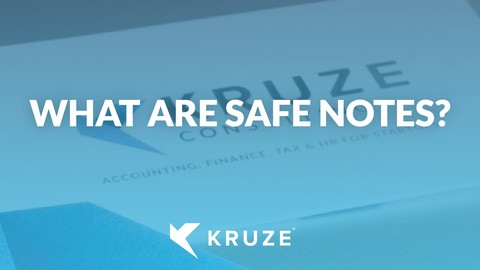
A venture capital (VC) firm has a very different business model from most companies, and it’s important for you as a founder to understand how that model works and how VCs make money. If you’re raising venture capital, you should know what motivates your investors.
If you’re developing a financial plan for your startup, Kruze Consulting helps startups with financial modeling, fractional CFO services, due diligence, and more.
VCs make money in two ways
Venture capitalists make money in two ways. The first is a management fee for managing the firm’s capital. The second is carried interest on the fund’s return on investment, generally referred to as the “carry.”
Management fees. Management fees are set as a percentage of the total fund amount annually. A venture fund is a pool of money invested by high net worth individuals, investment banks, insurance companies, endowments, retirement funds, and other financial firms. Once a venture capital firm raises a pool of money, it charges its investors a fee to manage the fund. The management fee is typically two percent of the value of the fund per year.
For example, assume a VC raises $100 million in a venture capital fund. The management fee would be $2 million ($100 million x 2%). This fee is used to help pay partner and associate salaries, employee salaries, accounting, taxes, audits, and all the other costs of running the fund.
Management fees become more lucrative when the investment firm runs multiple funds at one time. VCs now launch new funds every two to three years, and the fund’s lifespan is seven to 10 years. A VC firm is probably collecting management fees on several funds simultaneously.
With management fees, there is normally a point during the VC fund’s lifespan where the management fees will be reduced annually, usually once the “active investment” period ends. The 2% annual fee may be reduced each year until the fund is closed. Using the hypothetical $100 million VC fund, for the first three years, the VC firm may collect $2 million. In year 4, the fee might be reduced by 20 basis points to 1.8%, and the VC firm gets $1.8 million in management fees ($100 million x 1.8%).
The management fees continue to drop by 20 basis points each year (1.6% in year 5, 1.4% in year 6, and so on), but normally do not go below 1% until the fund end date. At any point the VC firm may have two or three funds from which they are collecting the full 2% management fee, and other funds that are past the active phase and are paying lower management fees.
The carry. Carry is the profit participation that a VC firm sets as part of its agreement with a startup. The agreement is typically structured so that once the fund’s investments start getting distributed back to the fund investors, the VC firm gets a percentage of any profits. Most carries are 20%, but a very successful firm with a strong track record might negotiate for a higher carry.
Again using a hypothetical $100 million fund, once the fund has reached its end date, the companies in which it invested may have successfully exited and were sold to acquirers, or may have held an IPO, and the fund’s investments are now worth $200 million. After the initial $100 million is distributed to the investors, the VC firm’s carry would be 20% of the $100 million gain, or $20 million. This is a much more significant source of revenue for the VC firm.
Within the firm a larger percentage of the carry is split between partners, and a smaller percentage is shared among other employees. With a $20 million carry, partners might split 80% or $16 million, and the remaining 20% of the carry ($4 million) might be distributed to other staff at the VC firm. That encourages the staff to make good decisions, to work with portfolio companies, and to help those startups be successful.
Management Fees and Carry interact to influence how VCs make money
One important item to note is that the 2% management fee isn’t “free” money. The management fee has a direct impact on the net returns generated by the fund. Since the management fee is paid out of the fund’s assets, it reduces the amount of capital available for investment in portfolio companies. This means that the fund’s overall returns will be lower than they would be if there were no management fee. So even though the venture capitalist is making money from the management fee, it impacts the hurdle rate to get to how venture investors are really supposed - carry.
So if a $100M fund has 2% management fee that drops over the life of the fund to blend to a 1.5% annual fee, that would be $1,500,000 per year for 10 years - $15M! So the fund would not invest the full $100M, instead it would only invest $85M, but the carry calculation is still pegged on returning the $100M fund size. Therefore, the investments have to earn back that $15M to get into the positive carry generating returns.
Even VC’s don’t get free money!
Other considerations for VC firms
When you’re looking at VC returns, it’s important to remember that not every startup succeeds. So while the upside on a successful company can be significant, the VC fund almost certainly has other companies in its portfolio that didn’t do well. So if the VC fund scores a home run with one company, that has to be balanced against other companies that didn’t have a big outcome. Another possibility is that some VC funds, such as prestigious funds or even small funds run by well-known venture capitalists, might negotiate for higher management fees.
The Math for Founders
Ok, so let’s say that you are a startup founder raising funding. The VCs you are talking to probably need to 3x their fund to make a great return, right? So that means your startup needs to exit for three times the value; basically, if the VC invests at a $30 million valuation, they should be excited for a $90 million exit. Right?
No.
Venture returns are driven by outlier returns for a couple of reasons.
First of all, early-stage startups are very risky. It’s normal for 1/2 of a fund’s investments to go out of business and return zero $. If half of a fund’s portfolio goes out of business, the other half needs to return at least 6x to make up the difference.
Of course, with venture capital, nothing is that easy.
Because many of the companies that do exit will likely exit for about what the VC invested in the 1st place, meaning that they don’t to anything toward working against that three times return that the investor needs for the entire fund. So founders should expect their investors to not be happy unless their startup makes ten times or more the initial money that is invested.
Secondly, most top-tier funds have one or just a small handful of companies that return 50, 100 times their investment. And these are the funds that limited partners dream of investing in. So the typical partner at a venture fund is going to push their founders to go big, sometimes a bit irrationally.
Finally, every firm is organized differently - but many firms judge each partner on their individual performance. So even though the fund may be doing great, if your particular startup’s investment partner needs your company to make or break their career… well, funny things can happen as they push your startup to be the one that makes them money and keeps them in the investing game.
By understanding how venture capital firms make money, you’ll have a better grasp of what they are looking for when selecting investments. Primarily they’re looking for big wins, with large returns, which will benefit them through the carry. And the investors in those VC funds are looking for the same thing. And while a good venture capital firm will take care of every company in their portfolio, sometimes they will focus on the two or three companies that have the best chances for success, because those will deliver the returns for their investors.
Of course, not everyone who wants to found a company knows what venture capital is - so let’s break that down a bit.
What is Venture Capital: A Guide for Founders
Defining Venture Capital
Venture Capital is a subset of private equity, specifically designed to invest in young and dynamic companies. The capital in VC comes from affluent individuals, pension funds, endowments, insurance companies, and other entities that are willing to take higher risks for potentially higher rewards. This form of financing is distinct from traditional bank loans or public markets, focusing instead on long-term growth potential.
The Mechanics of Venture Capital
Venture Capital operates through a high-risk, high-reward paradigm. VCs invest in businesses they believe have the potential for significant growth and returns. Unlike conventional loans, venture capital is typically exchanged for equity in the company. This means venture capitalists have a stake in the business’s success. The funding process usually happens in stages, starting with pre-seed or seed funding for early development, followed by early-stage funding for operational startups, and finally, growth-stage funding for rapidly expanding companies.
The Role of Venture Capitalists
The best venture capitalists bring more than just financial investment to the table. They often take on advisory roles, providing strategic guidance, industry expertise, and mentorship. This support is crucial in navigating the complexities of growing a business. Furthermore, VCs offer networking opportunities, connecting startups with a broader industry network, which can include potential customers, partners, and future investors. Of course, not every one is going to be helpful in operating or making introductions - and that’s not always a bad thing. Sometimes founders just need capital, and an investor who understands that they aren’t going to be needed as aggressive advisors to the business makes sense. Founders should try to align how active the investor wants to be with the type of advice and help they think the investor can legitimately provide.
Impact on Startups and the Economy
VC funding is a catalyst for innovation and economic growth. It enables startups to develop groundbreaking technologies and disruptive business models. Successful startups, backed by venture capital, often create significant employment opportunities and contribute to economic dynamism. Thus, venture capital is not only a finance tool but also a growth engine for the broader economy.
A good VC firm that’s aligned with your startup can be extremely helpful. As a founder you want to work with a VC firm that reflects your values and your business objectives. We have other resources for companies raising capital, including our free financial models for startups and our VC pitch deck templates. If you have questions about venture capital investors and how they can benefit your startup, contact us.









